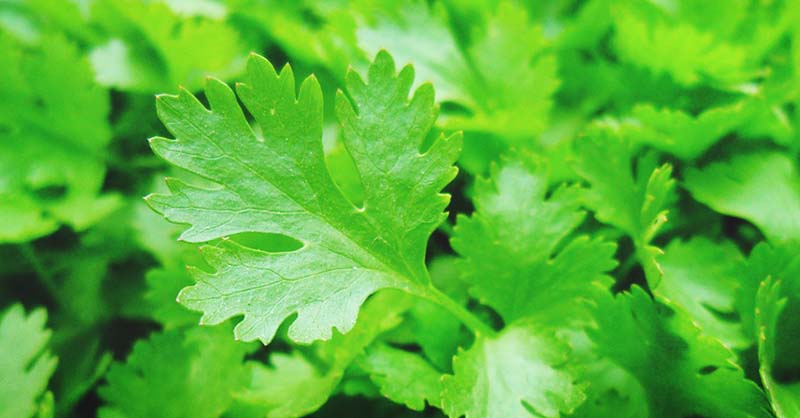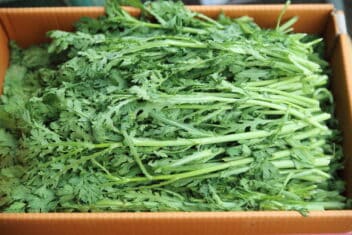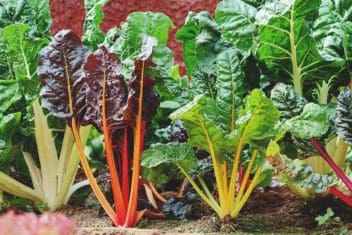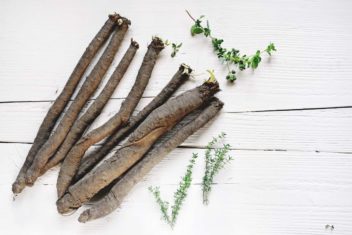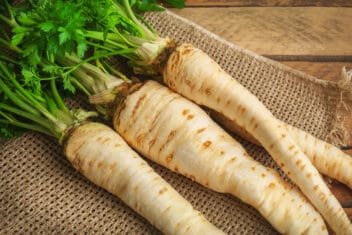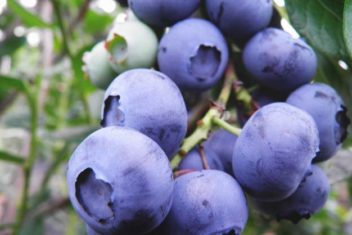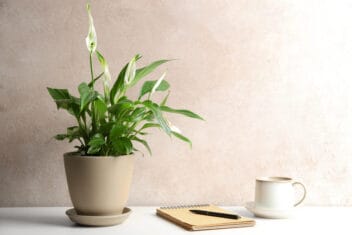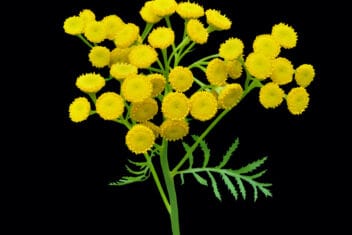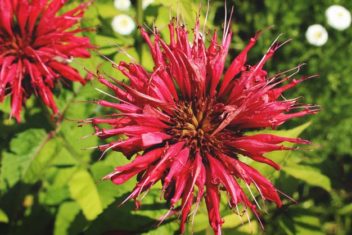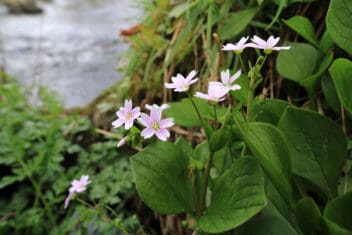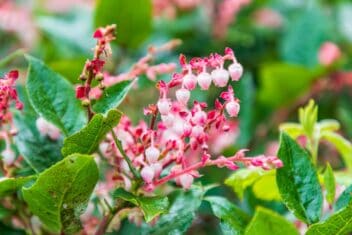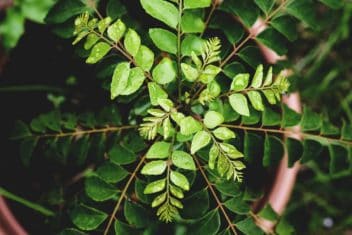If I could only have one herb in my garden I would choose parsley. Basil would be a close contender, but considering how easy growing parsley is and how temperamental basil can be, parsley is the winner.
There’s also the fact that parsley is a super-food. It’s immunity enhancing, a powerful antioxidant, and high in vitamins A, C and K. It contains beta-carotene, folate, calcium, chlorophyll, and get this, it’s the richest plant-based source of iron! It’s a green multi-vitamin powerhouse.
Parsley makes a killer infused tea if you have flatulence or indigestion, and it may help with kidney and bladder infections. Let’s not forget how good it tastes in anything from pasta to salads. Famous chef James Beard said that parsley is so essential for cooking that it goes without saying.
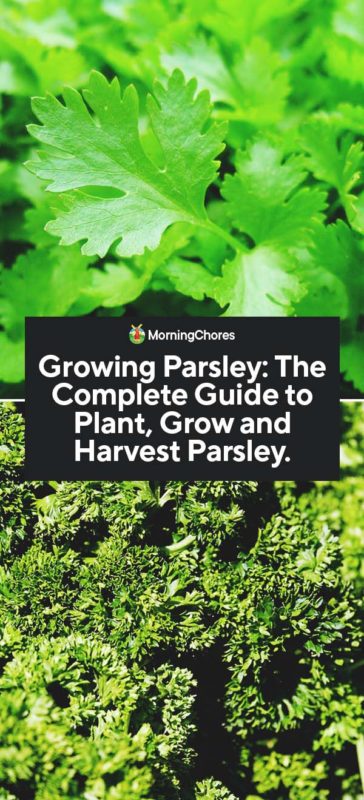
Parsley Varieties
There are two types of parsley (Petroselinum crispum): curly and Italian. Both are biennials but most gardeners grow them as annuals. That’s because, by their second year, parsley leaves become a little tougher and more bitter.
Curly
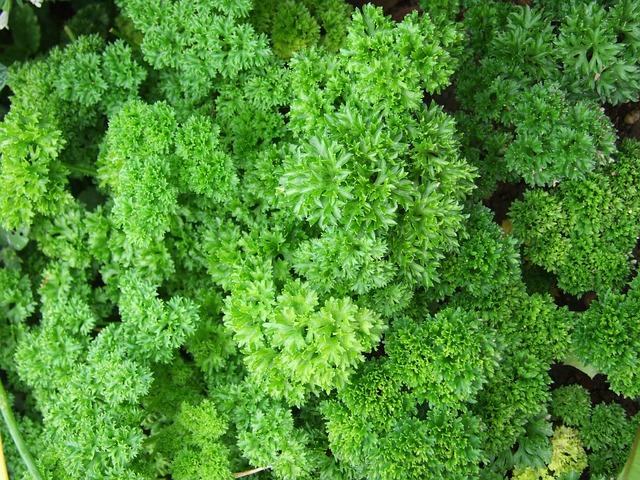
- Aphrodite – Aphrodite is a vigorous variety. It’s dark green and has a strong flavor.
- Darki – Even darker than Aphrodite, Darki has high levels of essential oils.
- Forest Green – This is likely the most common variety in your area. Its stems are long and upright, which allows for easy bunching. Forest Green is drought resistant and is unlikely to discolor in the sweltering summer heat. It will grow 10-12 inches tall.
Italian Parsley (Flat Leaf)
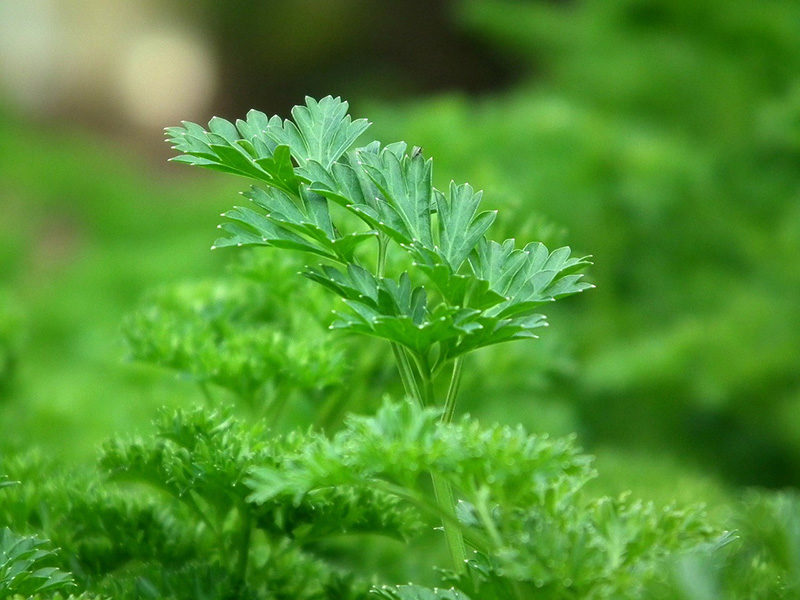
Flat leaf is sweeter than curly parsley and less pungent. It is widely available, but make sure to water regularly as it dries out and the leaves become tough.
Hamburg Parsley
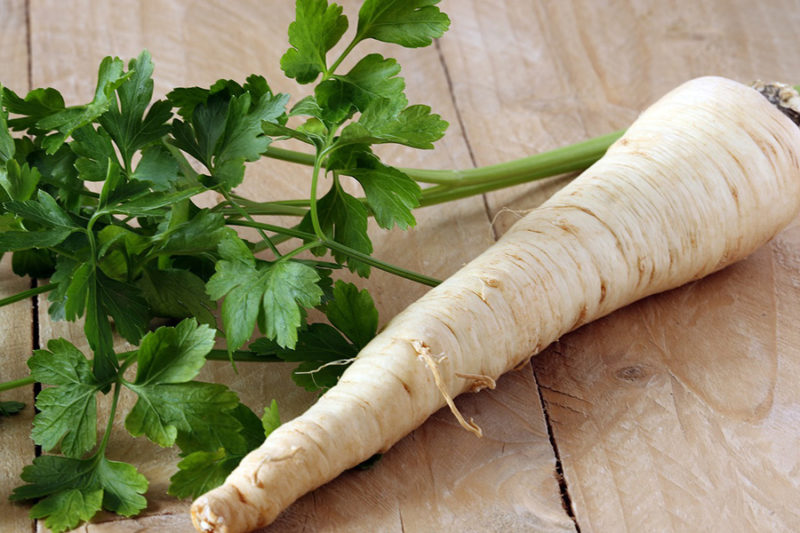
Hamburg parsley, also known as rooted parsley, is the lesser known sibling in the parsley family. That’s a shame, because it’s a dual purpose plant. You can eat the roots and the leaves.
You want to keep this plant thinned out more than you would other parsleys because the root needs room to grow. It takes four months before it’ll be ready to harvest and don’t snip the leaves until you’re ready to pull the roots.
How to Grow Parsley
Growing Zones
Parsley grows well in zones 3-9. Parsley can grow through winter in zone 9.
When to Plant Parsley
Start indoors six weeks before the last frost date in your area or plant in the garden when the soil can be worked. If you live in a hot climate, grow parsley as a cool-season annual.
In the peak of summer, parsley may die, so it’s best to plant it in the fall for spring harvest in frost-free climates. In zone 8 and lower, you can sow your parsley in early spring for a late spring or early summer harvest. Parsley can survive temperatures as low as 20°F.
Plant Parsley Seeds Directly
Sprinkle seeds on prepared soil and cover with 1/4 inch of
In hot climates, this means waiting until the ground cools to 85°F before planting, or the seeds won’t sprout. In cold climates, you may have to wait until temperatures rise a little before the seeds start growing.
Starting Indoors
Start indoors 6 weeks before the last frost in your area. Harden them off a week before putting them in the ground permanently. Transplant 2-3 weeks after the threat of frost has passed.
Germination for parsley can take 2-3 weeks, so be patient. You can soak seeds before planting if you want to speed things up a little. Keep growing parsley seeds moist (but not wet) at all times.
Container Growing
Growing parsley in a container is a cinch, and it allows you to bring plants indoors if it gets too hot or too cold. Sprinkle the seeds into a deep pot filled with potting soil and lightly cover to 1/4-inch deep. Fertilize regularly, since potted plants don’t have the same access to nutrients as
Soil Requirements
Parsley loves nutrient-rich, moist soil. Dig in plenty of compost or rotted manure before planting and plant in free-draining soil. Aim for a pH level between 5.5-7.
Sun Requirements
Plant parsley in full, direct sun. If you live in an area where it gets hot, provide some shade during the hottest parts of the day.
Spacing
Plant seedlings about 6-10 inches apart with 12-24 inches between rows.
How to Care for Parsley
Watering
Parsley is quick to bolt to seed if you let it get too dry. The plant will also go dry and crispy if it’s starved of sufficient water. Mulch in drier climates to help keep the moisture in.
Fertilizer
Ensure the soil is well fed before planting. Fertilize once a month to ensure healthy leaf production.
Weeding
Keep the area around your parsley plants free of weeds. Weeds will weave in and out of the parsley leaves because the they are loosely formed.
Pruning
Deadhead flowers and snip leaves regularly to encourage new growth.
Common Problems and Solutions for Growing Basil
Leaf Hoppers
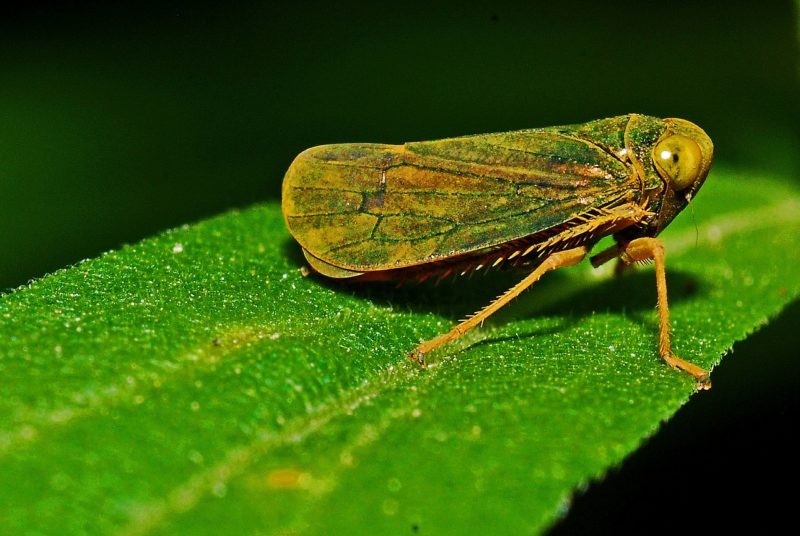
Leafhoppers have an insatiable appetite and cause immense damage. They literally suck the sap out of the plant. More often than not, you’ll find them on the underside of leaves.
Use insecticidal soap to control leafhoppers. I’ve used organic pyrethrum with success. You can also use neem oil. H
Crown/Root Rot
Crown and root rot are associated with over-watered soil. This is caused by fungi and bacteria found in the ground when it is too wet. The leaves turn yellow and brown before the whole plant becomes discolored and dies. Roots go black and decay, and new shoots will not form. Destroy impacted plants.
Leaf Spot
Leaf spot is caused by the Septoria fungus. Yellow spots show up on parsley foliage then turn brown. The leaves will eventually wilt and fall off. Leaf spot can destroy an entire plant. I have found sulfur fungicide works, but if the damage is extensive, it’s best to remove the infected plants before it spreads.
Blight
Blight – aka grey mold – is caused by a fungus. It starts out with brown or black spots on the leaves, then a grey fungal growth covers much of the plant. Prevention is better than cure, so ensure your parsley has plenty of sunshine and good airflow.
Powdery Mildew
Powdery mildew attacks all kinds of garden plants, including parsley. You’ll see mildew forming on the leaves, stems and shoots of your plant, especially during warm weather. Make sure plants have adequate air circulation, plenty of light, and not too much fertilizer. Mix 1 teaspoon baking soda and 1 teaspoon neem oil with 1/2 gallon of water and spray plants to control it.
Aphids
Aphids are another common garden problem. If you see these tiny sap-sucking insects, spray them with a blast of water to knock them off your plants and then treat plants with neem oil.
Carrot Weevil
Carrot weevil attacks
In small gardens, you can hand pick these bugs, but you may also want to spread diatomaceous earth and put parasitic nematodes in your garden to be safe. Neem oil can be effective if applied regularly in the spring and early summer.
Slugs and Snails
Slugs love all things leafy including parsley. If you see them on your plant, hand pick them, place crushed oyster shells around plants, or use a slug trap or pellets.
Companion Plants for Parsley
I like growing parsley by scattering the seeds around other plants. I’ve heard that growing parsley around rose bushes makes the flowers smell sweeter, though I’ve never tried myself.
The best companion plants are:
- Tomatoes (I’ve scattered both parsley and basil around tomato plants)
- Chives
- Carrot
- Corn
- Peppers
- Onions
- Peas
- Apple
- Rose
Worst Companions
- Mint
- Lettuce
- Onion
- Chives
- Shallots
How to Harvest and Use Parsley
Seeds
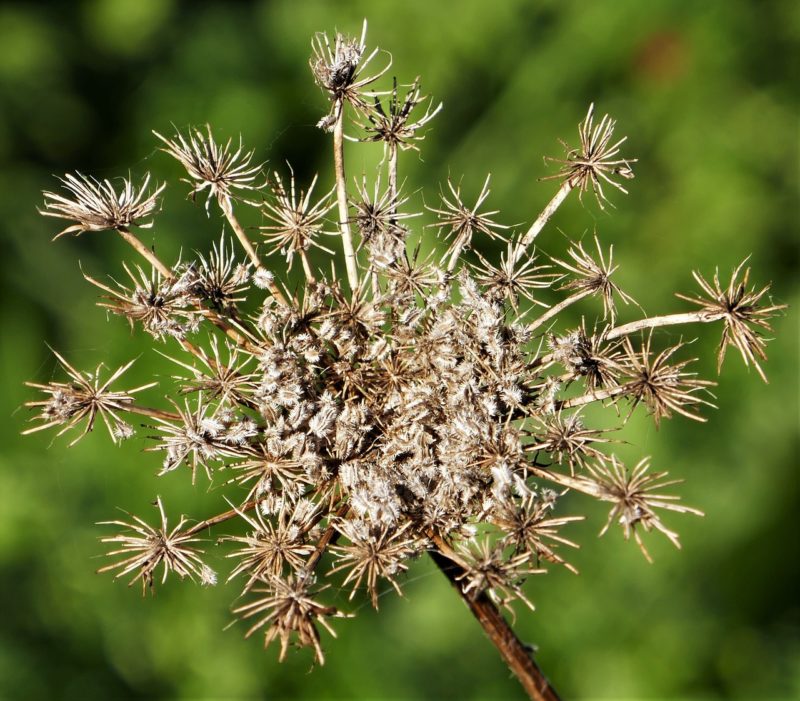
Allow the seeds to mature on the plant and then cut off at the stem once they’re completely dry. Store in an envelope until next year. Simple and fuss-free.
Leaves
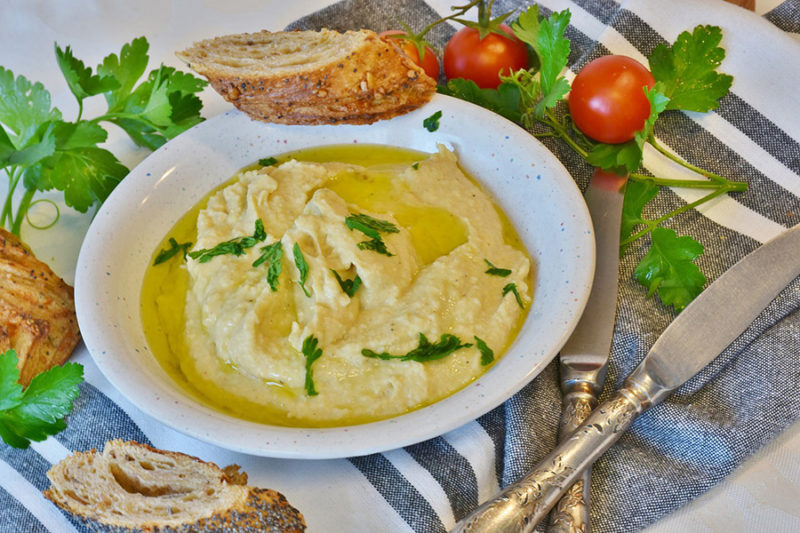
Pick the young leaves regularly to ensure a constant supply. They’re perfect in any Italian dish and I love them in salads. The leaves of the flat leaf variety are better torn or roughly chopped. The curly type is better finely chopped and sprinkled on food.
White sauce with finely chopped parsley is one of my favorites. You can also dry the leaves to use throughout the year in soups and stews. Dry the leaves in a food dehydrator or by hanging them. My mother used to dip the sprigs in boiling water for two minutes, then place in a very low oven until dry. Crush the dried leaves and store in a glass jar.
Roots
Four months after planting, you can pull your Hamburg parsley out of the ground. The roots taste like parsley and parsnip combined. You can use it anywhere you’d use carrots or parsnips, like shredded in a salad or cooked up in a stir-fry.
Growing parsley is one of the easier gardening endeavors. Give it a go: you’ll be glad you did. Do you have any tips and tricks for those that are new to growing parsley? Do you have any great recipes to share with us on how to use your parsley harvest?

